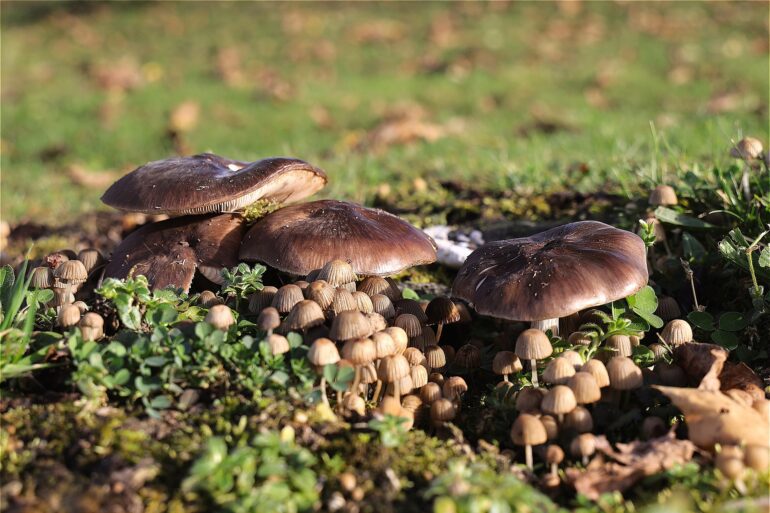TL;DR:
- New chemistry in fungi reveals highly reactive enzymes and common gene traits.
- Computer algorithms enable efficient search for genes producing valuable compounds.
- Traditional algorithms hit limitations, leading to the rediscovery of known compounds.
- The innovative algorithm identifies gene clusters synthesizing isocyanide, unlocking the fifth-largest class of natural products in fungi.
- Over 1,300 fungal species contain isocyanide gene clusters with significant biological potential.
- A searchable website facilitates access to fungal gene cluster data for further research and development.
Main AI News:
A groundbreaking discovery in the world of fungi is set to revolutionize the search for valuable biological compounds with extraordinary medical and chemical applications. Recent advances in chemistry have led to the identification of a hitherto hidden type of fungal chemistry, which, surprisingly common and featuring highly reactive enzymes, is now opening up a new frontier in the quest for novel bioactive molecules.
Until recently, this discovery had remained elusive to scientists, but in the last 15 years, the search for promising molecules derived from living organisms has been empowered by computer algorithms. These algorithms scour the DNA of bacteria, fungi, and plants for genes responsible for producing enzymes that drive biological processes leading to fascinating compounds.
However, the traditional algorithmic approach had its limitations, as it focused mainly on genes related to three canonical backbone enzymes. Researchers soon found themselves repeatedly rediscovering the same compounds, leading to a stagnation in the field. In 2005, the genome sequencing of Aspergillus fumigatus, a fungus with potential implications for immunocompromised individuals, exposed a plethora of gene clusters linked to isocyanide synthase, a non-canonical enzyme not previously recognized for its significance in fungi.
Now, a new era of exploration has dawned with the publication of a groundbreaking study in Nucleic Acids Research. A team led by Grant Nickles and Professor Nancy Keller has developed an innovative algorithm designed to sift through fungal genomes, identifying biosynthetic gene clusters responsible for synthesizing isocyanides. These clusters, which went largely unnoticed before this research, have been found to be the fifth-largest class of natural products produced by fungi, with more than 1,300 fungal species harboring them.
The sheer prevalence of these gene clusters suggests that they likely play crucial roles in the fungi’s biology, possibly offering valuable insights into their utility for medicinal or chemical purposes. Milton Drott, co-author of the study, emphasizes that the gene clusters they have discovered could be a treasure trove of valuable compounds. This research has effectively created an atlas of isocyanide-producing gene clusters, revealing intriguing patterns that could guide further exploration.
Professor Keller’s mission now is to identify unique combinations of genes within the clusters, particularly those involved in customizing enzymes for specific functions or transport. The study’s findings have been compiled into a searchable website, simplifying access for other research laboratories eager to delve into this exciting field.
The implications of this discovery are vast and extend beyond academia. The potential applications are far-reaching, encompassing antibacterial drugs, pesticides, and novel catalysts for industrial and pharmaceutical chemistry. The promise of these newly uncovered natural products has caught the attention of companies like Terra Bioforge, co-founded by Professor Keller, which actively seeks to harness the power of useful compounds found in microbes.
Additionally, the research holds great significance for agricultural applications, where fungi can cause blight in crops such as barley and wheat. With newfound knowledge of isocyanides, researchers like Milton Drott hope to leverage these gene clusters to combat pathogens and find innovative solutions to protect crops and ensure food security.
While much remains unknown about the full potential of these newfound isocyanide compounds, the scientific community is now armed with an arsenal of data and a clear direction to explore the mysteries of this fascinating fungal chemistry. As researchers embark on this exciting journey, one thing is certain: fungi are proving to be a treasure trove of untapped biological gold, waiting to enrich our lives in ways we have yet to imagine.
Conclusion:
The discovery of new chemistry in fungi, enabled by an innovative algorithm, has unveiled a vast treasure trove of potential biological compounds. With over 1,300 fungal species containing isocyanide gene clusters, this breakthrough opens up numerous opportunities in the market for pharmaceuticals, agricultural applications, and industrial catalysts. The accessibility of the data through the searchable website facilitates research and development, fostering a dynamic and promising landscape for the exploration of novel natural products and their commercial applications. Businesses in the pharmaceutical and agrochemical sectors should take heed of this revelation, as it promises to spur innovation and potentially revolutionize the discovery of valuable bioactive molecules.

